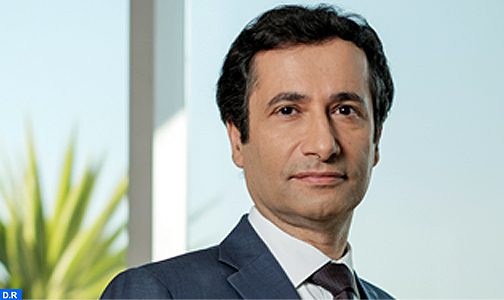No matter how many times you’ve seen the movie, this ridiculous flaw has gone unnoticed, and it changes everything… And the third takeaway from the California recall is that the politics of the pandemic may be shifting back in Democrats’ favor. Because of all these quirks, it’s difficult to draw any conclusions about national politics from California. But there are three takeaways from Newsom’s victory that are worth noting as the 2022 midterms approach. Voters cast their ballots at a vote center at Santa Monica College. Under a best-case scenario for the governor, a comeback story line from the recall might even help Newsom discredit the image popularized by his GOP gubernatorial rivals of a preening lightweight.

Turnout was 39.77% of the county’s more than 5.6 million registered voters. California Gov. Gavin Newsom addresses supporters 5a 7 after defeating the recall effort. Democrats hold a vast numerical edge over Republicans in California –- a nearly 2-to-1 margin, or about 5 million voters.
- The 12 questions that help explain the historical, political and logistical forces behind the effort to recall Gov. Gavin Newsom of California.
- While Republicans did make some surprising voter gains in the 2020 election, their long-term prospects look terrible once again.
- Nearly 8 million mail-in ballots — the form of voting most Californians use — already have been returned out of 22 million sent to registered voters.
- As one example, California’s massively underfunded public pension system is not just a theoretical problem; increased payments to CalPERS and CalSTRS are eating into the budgets of school districts, cities, and counties.
As one example, California’s massively underfunded public pension system is not just a theoretical problem; increased payments to CalPERS and CalSTRS are eating into the budgets of school districts, cities, and counties. As another example, no reforms were made to California’s unstable tax structure, despite urgent warnings from Jerry Brown and others, and it led to a historic deficit in 2020. Satisfying immediate political demands has been the way of the Capitol for too long. California needs a new model of political leadership based on durable stewardship of the public interest. The opposite of Gavin Newsom’s corrupt governorship is one that serves the public interest.
Poll shows 60.1% of likely voters surveyed oppose recalling Newsom compared to 38.5% in favor of ousting the governor. Local officials from across California estimate the cost of conducting the election could run as high as $400 million, though the state Department of Finance estimated the cost of the special election at $276 million, a price tag that will be borne by taxpayers. Though scores of candidates expressed interest in running, only a few launched professional campaigns, raised money and took other steps that indicated a serious bid for office.
Enten Breaks Down What California Voters Had To Say
The election was the fourth gubernatorial recall election in American history and the second in state history after the 2003 recall election, which resulted in the successful recall of Governor Gray Davis, who was replaced with Arnold Schwarzenegger. From 2003 to 2019, Ballotpedia tracked 57 gubernatorial recall efforts against 15 governors. During that time, two recalls made the ballot and one governor was successfully recalled. Former California Gov. Gray Davis was recalled by voters in 2003. The only other governor to ever be successfully recalled was former North Dakota Gov. Lynn Frazier in 1921.
After that, since the signatures held, election officials had 30 days to come up with a budget, then there was another 30-day period for the legislature to review that cost estimate. Overall, the recall election has come amid a very challenging and uncertain time for Californians. There are the wildfires, the drought, crime, homelessness all taking their toll. But at the heart of it all is the handling of the coronavirus pandemic.
Everything You Need To Know About The California Recall Election
The recall election result was officially certified on October 22, 2021. Newsom had survived the recall with similar results as his first run for governor. No on recall votes exceeded that of what the votes Newsom received in 2018 by 200,000 votes and had a similar vote percentage as well. No on recall had also won nearly all counties that Newsom had, save for Merced County that voted for the recall by 4 points.
Recall Campaign
The California Democrats, he said, “take a big risk” if they decide against having a prominent Democrat in the stack of potential replacement candidates. Nunes said the candidates in the second question are not divided by party, in that anyone can run to replace the embattled Democrat, who has come under fire for coronavirus lockdown measures that have hurt the businesses in the state. Newsom also was supported by the nation’s largest state Democratic Party and politically powerful public worker unions – his campaign said 25,000 volunteers hit the streets the weekend before the election. Ron Nehring, former chairman of the California Republican Party and a supporter of GOP candidate Kevin Faulconer, said Elder “served as a life preserver for Gavin Newsom” because he gave the governor a target and shifted attention from his own record. The alarmist message was quickly incorporated into Newsom’s remarks on the campaign trail – he was in serious trouble, he warned. The sequence of events combined to create a turning point in the race and helped energize California’s dominant Democratic voters, who until then appeared to be greeting the contest with a collective shrug.
Election
Despite those differences, polling results released shortly after Newsom’s recall election date was set suggested voters were split on the decision of Newsom’s removal. The California Democratic Party and several high-profile Democrats from around the country quickly rallied to Newsom’s side to motivate voters and encourage turnout, all while reiterating the Newsom campaign’s portrayal of the recall effort as one driven by far-right conservatives. This time around, Newsom faced 46 candidates who qualified for the recall ballot. As the recall election drew closer, Newsom’s campaign continued drawing comparisons between recall supporters and former President Donald Trump, a strategy that intensified following the campaign launch of conservative radio host Larry Elder.
The first is that the GOP is still the party of Trump — even in a deep-blue state such as California, where the only kind of Republican who might still stand a chance of winning statewide would be an experienced moderate like former San Diego Mayor Kevin Faulconer. But Faulconer failed to crack 5 percent in the polls, and instead GOP recall voters gravitated toward Elder, a brash, Trumpian entertainer. Meanwhile, the election itself would never have been considered competitive if not for the way it was structured. The first ballot question (“Do you want to recall the governor?”) required Newsom to secure at least 50 percent of the “no” vote to survive. In 2018, the former San Francisco mayor was elected governor with 62 percent of the vote — the largest Democratic landslide in state history. Nearly three years later, 57 percent of Californians still approve of his performance in office, according to a recent CBS News poll.





